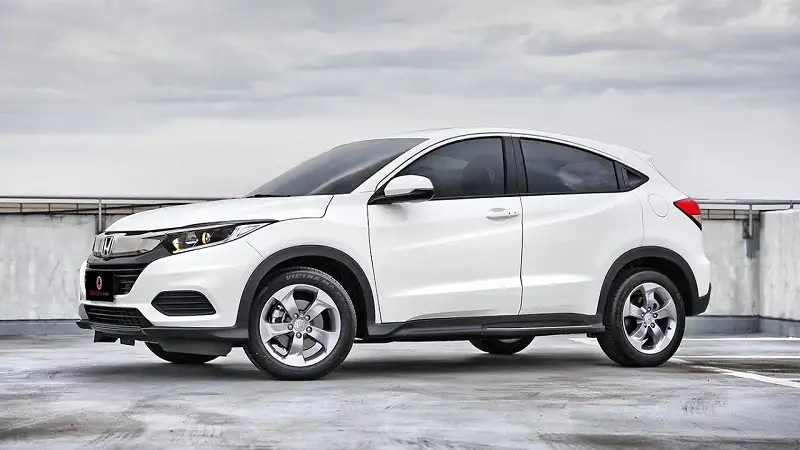Introduction
In the bustling city of Taipei, Taiwan, tradition and innovation collide in an extraordinary way with the emergence of self-driving gharry. These iconic horse-drawn carriages, reminiscent of a bygone era, have been given a futuristic twist through the integration of self-driving technology. This article delves into the fascinating world of Taipei’s self-driving gharrys, exploring their history, features, advantages, and the impact they have on the city’s transportation landscape. Discover how tradition meets innovation in this exciting and sustainable mode of transportation.

The Legacy of Taipei’s Gharrys:
a. Historical significance and cultural heritage: Taipei’s gharrys hold a significant place in the city’s history and cultural heritage. These horse-drawn carriages were once a common mode of transportation, offering a nostalgic glimpse into Taipei’s past. Gharrys were not just vehicles; they represented a way of life, symbolizing tradition, elegance, and a connection to the city’s rich cultural roots.
b. The decline of gharrys in modern times: As Taipei evolved into a modern metropolis, the demand for gharrys diminished. The rise of motorized vehicles and the development of more efficient transportation systems resulted in a decline in the use of traditional gharrys. This decline threatened the survival of this cherished cultural icon, prompting the need for innovative solutions to preserve its legacy.
The Rise of Self-Driving Technology:
a. Introduction to self-driving technology: Self-driving technology, also known as autonomous driving, refers to the ability of vehicles to navigate and operate without human intervention. It utilizes a combination of advanced sensors, artificial intelligence, and sophisticated algorithms to perceive the environment, make decisions, and control the vehicle’s movements.
b. Integration of self-driving technology in traditional gharry: To revive the legacy of gharrys and embrace technological advancements, Taipei introduced self-driving technology into these traditional vehicles. The integration of autonomous systems allows gharrys to operate without the need for a human driver, providing a blend of nostalgia and futuristic innovation.
c. Development and implementation challenges: The development and implementation of self-driving technology in gharrys come with their own set of challenges. These include ensuring the safety and reliability of autonomous systems, addressing regulatory and legal considerations, and overcoming public concerns and skepticism surrounding the adoption of such technology.

Features of Taipei’s Self-Driving Gharrys:
a. Autonomous navigation and control systems: Self-driving gharrys in Taipei are equipped with advanced navigation and control systems that enable them to navigate through the city’s streets autonomously. These systems utilize GPS, mapping data, and real-time sensors to ensure safe and efficient travel.
b. Safety features and obstacle detection: Safety is a top priority in self-driving gharrys. They are equipped with various safety features such as collision detection, emergency braking, and advanced driver-assistance systems (ADAS) to detect and respond to potential obstacles or hazards on the road.
c. Accessibility options for passengers: Self-driving gharrys prioritize accessibility for all passengers. They are designed to accommodate individuals with mobility challenges, offering features such as wheelchair accessibility and user-friendly interfaces for ease of use.
d. Integration with smart city infrastructure: To enhance the overall transportation ecosystem, self-driving gharrys are integrated with smart city infrastructure. This integration allows for seamless communication with traffic management systems, optimizing traffic flow and reducing congestion.
Advantages and Benefits:
a. Enhanced safety and reduced accidents: Self-driving gharrys leverage advanced technologies to minimize human errors, leading to enhanced safety on the roads and a reduction in accidents. The vehicles’ autonomous systems are designed to constantly monitor the surroundings and respond swiftly to potential risks.
b. Improved efficiency and reduced congestion: The integration of self-driving technology in gharrys contributes to improved traffic flow and reduced congestion. These vehicles are programmed to make efficient route choices, optimize travel times, and minimize traffic bottlenecks.
c. Environmental sustainability and reduced emissions: Self-driving gharrys are often electric or hybrid vehicles, promoting environmental sustainability by reducing reliance on fossil fuels. They help mitigate air pollution and lower carbon emissions, contributing to a cleaner and greener urban environment.
d. Enhanced accessibility for diverse populations: Self-driving gharrys prioritize accessibility, catering to the needs of diverse populations. With features such as wheelchair accessibility and user-friendly interfaces, these vehicles enable individuals with mobility challenges to travel with ease and independence.
Public Reception and Impact:
a. Initial public response and acceptance: The introduction of self-driving gharrys in Taipei has garnered significant public interest and curiosity. People are intrigued by the fusion of traditional and modern elements, and the initial response has been largely positive, with residents and visitors embracing the innovative mode of transportation.
b. Integration with existing transportation systems: Self-driving gharrys complement existing transportation systems, offering an alternative and sustainable mode of travel. They integrate seamlessly with other public transportation options, providing commuters with greater flexibility and convenience.
c. Economic impact on tourism and local businesses: Self-driving gharrys have the potential to boost tourism and support local businesses. They offer tourists a unique and memorable experience, promoting cultural tourism and generating economic opportunities for drivers, tour operators, and other associated businesses.
d. Future potential and scalability: The successful implementation of self-driving gharrys in Taipei opens up possibilities for further expansion and scalability. As the technology advances and gains wider acceptance, the self-driving gharry network can be extended to other cities, contributing to a more connected and efficient transportation ecosystem.
Read more=Using Cream Chargers to Create Delicious Desserts
Challenges and Future Developments:
a. Regulatory and legal considerations: The integration of self-driving technology in gharrys raises important regulatory and legal considerations. Establishing clear guidelines, safety standards, and licensing frameworks are crucial to ensure the safe operation of autonomous vehicles.
b. Addressing public concerns and building trust: Public acceptance and trust in self-driving gharry are essential for their widespread adoption. Addressing concerns related to safety, privacy, and job displacement through transparent communication and public awareness campaigns is necessary to build confidence among residents and potential users.
c. Advancements in self-driving technology: Continued advancements in self-driving technology are expected to enhance the capabilities of gharry further. Improvements in sensor technology, machine learning algorithms, and data processing will contribute to more sophisticated and reliable autonomous systems.
d. Expanding self-driving Gharry networks: The future holds the potential for expanding self-driving Gharry networks beyond Taipei. Collaborations between governments, technology developers, and transportation authorities can drive the adoption of self-driving gharry in other cities, creating a global network of autonomous horse-drawn carriages.
FAQs
What are self-driving gharrys?
Self-driving gharrys are traditional horse-drawn carriages that have been equipped with autonomous technology, allowing them to operate without the need for a human driver. These vehicles utilize advanced sensors, artificial intelligence, and control systems to navigate and interact with their surroundings.
How do self-driving gharrys work?
Self-driving gharrys rely on a combination of GPS, mapping data, sensors (such as LiDAR and cameras), and advanced algorithms to perceive their environment, make real-time decisions, and control their movements. These technologies enable the vehicles to autonomously navigate through city streets and interact with other vehicles and pedestrians.
Are self-driving gharrys safe?
Safety is a top priority for self-driving gharrys. These vehicles are equipped with advanced safety features, including collision detection, emergency braking systems, and obstacle detection. They constantly monitor their surroundings and respond swiftly to potential risks, aiming to minimize accidents and ensure passenger safety.
Are self-driving gharrys accessible for all passengers?
Yes, self-driving gharrys prioritize accessibility for all passengers. They are designed to accommodate individuals with mobility challenges, offering features such as wheelchair accessibility and user-friendly interfaces for ease of use.
How do self-driving gharrys contribute to sustainability?
Self-driving gharrys often utilize electric or hybrid technology, reducing reliance on fossil fuels and minimizing emissions. By promoting cleaner and greener transportation options, self-driving gharrys contribute to environmental sustainability and help mitigate air pollution.
Conclusion:
The introduction of self-driving technology in Taipei’s gharry represents a harmonious blend of tradition and innovation. These autonomous vehicles bring back the charm of the past while paving the way for a more sustainable and efficient transportation future. With enhanced safety, improved efficiency, and environmental sustainability, self-driving gharrys offer numerous advantages. Public acceptance and integration with existing transportation systems have the potential to transform urban mobility and support local economies. As the technology evolves, addressing challenges and advancing regulatory frameworks will ensure the responsible deployment and scalability of self-driving gharry networks. Taipei’s self-driving gharry stand as a testament to the city’s commitment to embracing technological advancements while preserving its cultural heritage.




